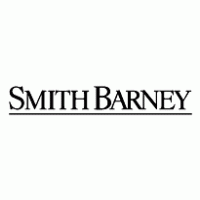Morgan Stanley Wealth Management facts for kids
| Private | |
| Industry | Financial services |
| Founded | 2009 |
| Founder | Henry S. Morgan, Harold Stanley, Charles D. Barney, Edward B. Smith |
| Headquarters |
,
U.S.
|
|
Area served
|
Worldwide |
|
Key people
|
James P. Gorman (chairman) |
| Products | Retail brokerage, asset management, investment banking |
| Revenue | US$17,242 billion (2018) |
|
Operating income
|
US$4,521 billion (2018) |
| US$3,472 billion (2018) | |
| AUM | US$2.05 trillion (2014) |
|
Number of employees
|
17,646 (2011) |
| Parent | Morgan Stanley |
Morgan Stanley Wealth Management is a large company that helps people and businesses manage their money. It is a part of a bigger company called Morgan Stanley. They specialize in "retail brokerage," which means they help everyday people buy and sell investments like stocks and bonds.
In 2009, Morgan Stanley joined forces with another big company called Citigroup. Citigroup sold a large part of its Smith Barney business to Morgan Stanley. This created a new company called Morgan Stanley Smith Barney. This new company had many financial advisors and managed a lot of money for individuals, families, and even big companies. Later, in 2012, the company changed its name to "Morgan Stanley Wealth Management" for its business in the United States.
Contents
The Story of Morgan Stanley Wealth Management
Early Beginnings of Smith Barney
The company's history goes back to 1938 when two older companies, Charles D. Barney & Co. and Edward B. Smith & Co., joined together to form Smith Barney & Co. Charles D. Barney & Co. started in 1873. Edward B. Smith & Co. began in 1892 and became important in helping companies sell new stocks and bonds.
In 1975, Smith Barney merged with another company called Harris, Upham & Co. They formed Smith Barney, Harris Upham & Co. This company was known for its TV commercials in the 1980s. These ads featured actor John Houseman and had a famous saying: "They make money the old-fashioned way. They earn it."
Growing Through Mergers
In the late 1980s, a company called Primerica Corporation owned Smith Barney. Primerica bought another company called Commercial Credit in 1988. Then, in 1992, they bought a share of Travelers Insurance. In 1993, they bought Shearson from American Express. By the end of 1993, the combined company was known as Travelers Group Inc., but the part that helped people with investments still used the Smith Barney name.
In 1993, the head of Primerica, Sanford I. Weill, bought Shearson back from American Express. He then merged it into Smith Barney. This made Smith Barney even bigger.
In 1997, Travelers Group bought Salomon Inc., which owned Salomon Brothers Inc. They combined it with their own investment business to create Salomon Smith Barney. In 1998, Travelers Group and Citicorp merged. This created Citigroup, which was the largest financial services company in the world at that time.
On September 11, 2001, the company had a large office space in 7 World Trade Center in New York City.
Joining Morgan Stanley
During a difficult time for the economy in 2008, Citigroup faced big financial problems. The U.S. federal government had to help them. To get more money, Citigroup decided to sell some of its businesses that were not central to its main operations.
On January 13, 2009, Morgan Stanley and Citigroup announced they would combine Smith Barney with Morgan Stanley's wealth management group. Morgan Stanley paid Citigroup $2.7 billion to own 51% of this new joint company. This new company was called Morgan Stanley Smith Barney. Morgan Stanley also received help during this time from a Japanese company, Mitsubishi UFJ Financial Group, which invested $9 billion in Morgan Stanley.
On June 1, 2009, Morgan Stanley and Citigroup officially launched their joint company, Morgan Stanley Smith Barney. This new company brought together many financial advisors and served millions of households around the world.
Later, on September 17, 2009, Citigroup announced that it would sell its remaining shares in the company to Morgan Stanley. This meant Morgan Stanley would fully own the wealth management business.


